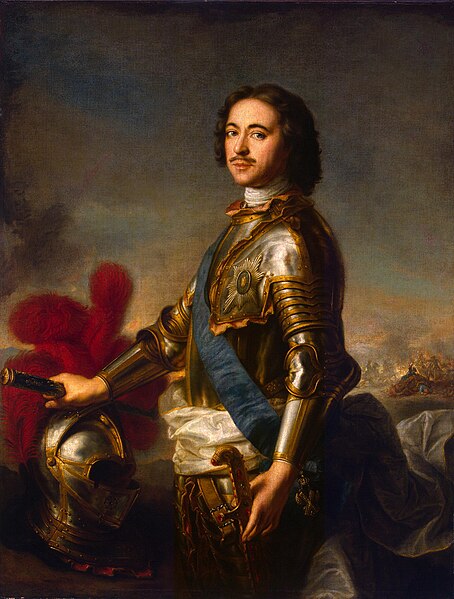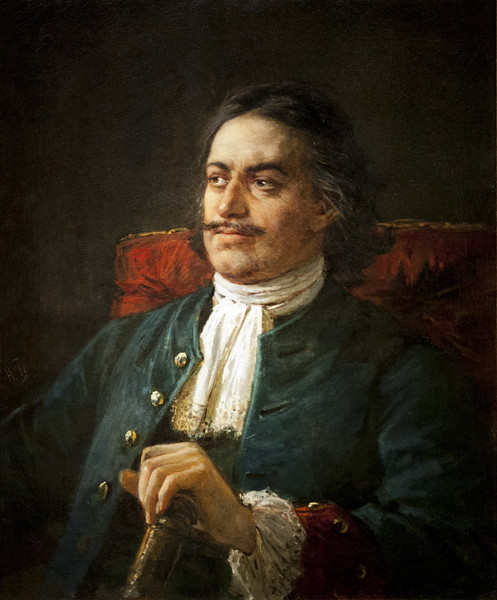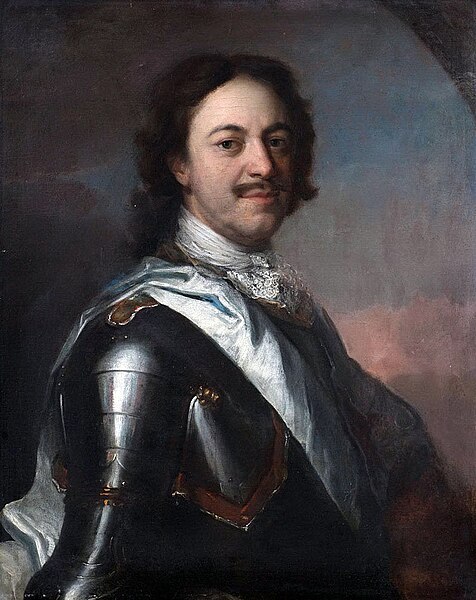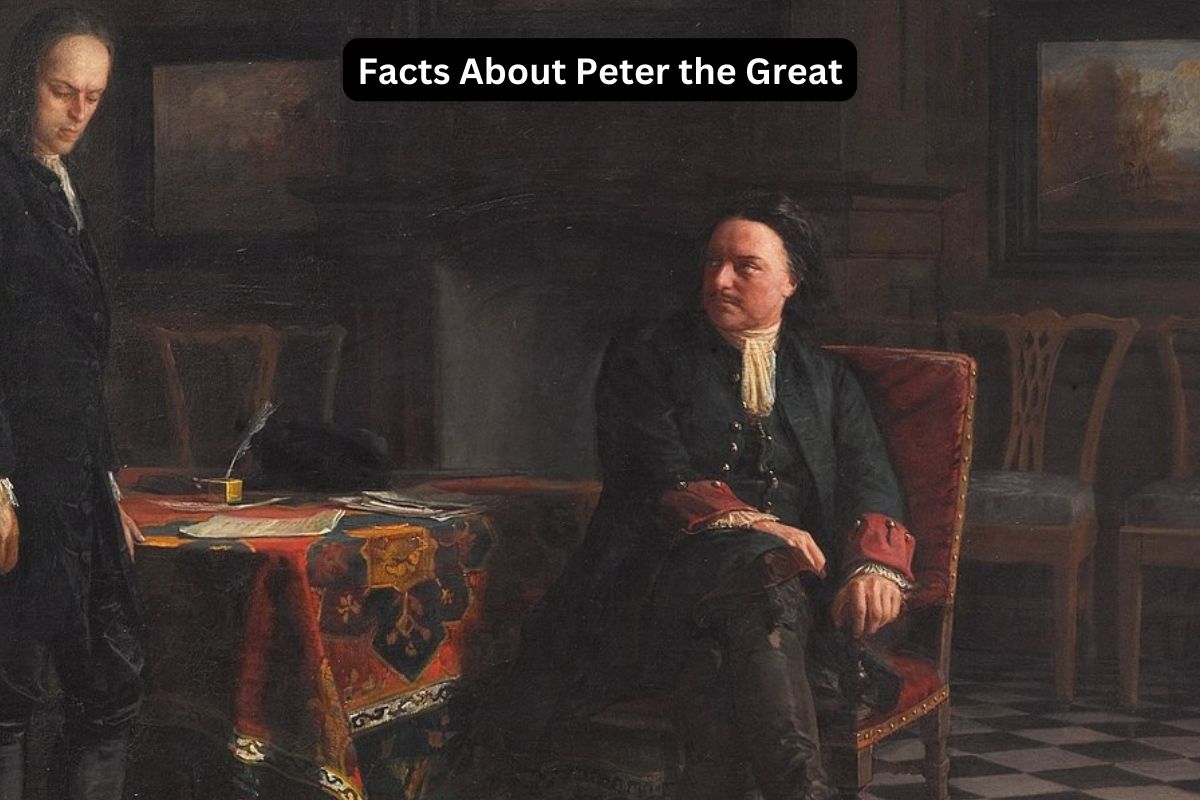In the annals of Russian history, few figures loom as large as Peter the Great. Ascending to power at a tender age, Peter embarked on a transformative journey to modernize Russia, catapulting the nation onto the global stage.
From his ambitious military campaigns to his sweeping social and cultural reforms, Peter’s reign left an indelible mark on Russian society.
This article delves into the multifaceted legacy of Peter the Great, exploring his visionary leadership, his enduring impact on Russia’s trajectory, and his patronage of the arts and sciences, which sparked a cultural renaissance that reverberates to this day.
Peter the Great Facts
1. Peter the Great ascended to power in 1682 at the age of 10
Peter the Great, born Pyotr Alekseyevich, rose to power in 1682 following a period of political instability in Russia. At the age of 10, he became co-tsar with his elder half-brother Ivan V, under the regency of their sister, Sophia Alekseyevna.
Also Read: Accomplishments of Peter the Great
However, Sophia’s ambition and desire for power led to tensions within the royal family and the broader political sphere. Eventually, Peter’s initiative and leadership qualities emerged, allowing him to assert more control over the government as he matured.

2. He aimed to modernize Russia, particularly in the military, industry, and education sectors
Throughout his reign, Peter the Great initiated sweeping reforms aimed at modernizing Russia and aligning it with Western European standards. Recognizing the technological and military advancements of Western nations, Peter sought to bring similar progress to Russia.
Also Read: Ivan the Terrible Accomplishments
He focused on restructuring the military, establishing a navy, and modernizing the army by introducing Western tactics and technologies. Additionally, Peter promoted industrialization, encouraging the development of factories and infrastructure to support economic growth.
3. Peter implemented Westernization policies, including the adoption of Western customs and manners
Peter’s Westernization policies extended beyond the military and economy to encompass social and cultural aspects of Russian society.
He implemented reforms to emulate Western customs and manners, advocating for the adoption of Western-style clothing and the shaving of beards—a significant departure from traditional Russian practices.
Peter also prioritized education and scientific advancement, establishing schools and academies to disseminate knowledge and foster innovation. These efforts aimed to propel Russia forward and position it as a formidable player on the European stage.
4. He founded Saint Petersburg in 1703, symbolizing his ambition for Russia’s transformation
One of Peter the Great’s most enduring legacies is the founding of Saint Petersburg in 1703. Motivated by his vision of a “window to the West,” Peter selected the strategic location of the city at the mouth of the Neva River on the Baltic Sea.
The construction of Saint Petersburg was a monumental undertaking, with thousands of serfs and laborers mobilized to drain marshlands and build the city from scratch.
Inspired by European architecture, Peter designed Saint Petersburg as a modern, Westernized city, complete with grand palaces, wide boulevards, and intricate canal systems.
The city’s establishment symbolized Peter’s ambition to modernize Russia and establish it as a significant European power.

5. Peter engaged in military campaigns to expand Russia’s territory, notably the Great Northern War against Sweden
Peter the Great’s military campaigns were pivotal in expanding Russia’s territory and asserting its dominance in the region. The most notable of these campaigns was the Great Northern War (1700-1721) against Sweden.
Under Peter’s leadership, Russia successfully challenged Swedish supremacy in the Baltic region, culminating in the decisive victory at the Battle of Poltava in 1709. This victory marked a turning point in European geopolitics and established Russia as a major power in Northern Europe.
Additionally, Peter waged wars against the Ottoman Empire, particularly in the Azov campaigns, which aimed to secure access to the Black Sea and establish Russia as a maritime power in the region.
6. Social reforms included restructuring the government and promoting secular education
In addition to his military and territorial ambitions, Peter the Great implemented sweeping social reforms aimed at modernizing Russian society.
He sought to centralize state authority and streamline governance by restructuring the government bureaucracy and establishing the Table of Ranks, a hierarchical system for civil and military service.
Peter also promoted secular education and scientific inquiry, recognizing the importance of knowledge and innovation in driving progress. His efforts led to the establishment of schools, academies, and universities throughout Russia, laying the groundwork for future intellectual and cultural development.
Furthermore, Peter’s reforms extended to the Russian Orthodox Church, where he sought to assert state control by establishing the Holy Synod as the governing body and secularizing church lands. These reforms aimed to modernize and strengthen Russia’s institutions, positioning the country for further growth and development.

7. Peter reformed the Russian Orthodox Church, establishing the Holy Synod for state control
Peter the Great’s reforms extended to the realm of religion, where he sought to modernize and assert state control over the Russian Orthodox Church.
In 1721, Peter implemented the Ecclesiastical Regulation, which abolished the position of the patriarch and replaced it with the Holy Synod—a collective body appointed by the tsar to oversee church affairs.
By centralizing authority within the church under the tsar’s control, Peter aimed to weaken the church’s political influence and align its interests with those of the state. Additionally, Peter secularized church lands, transferring them to state ownership and further diminishing the church’s autonomy.
8. His personal life was marked by tumult, including a turbulent relationship with his first wife, Eudoxia Lopukhina
Despite his significant achievements, Peter the Great’s personal life was marked by turmoil and controversy. His first marriage to Eudoxia Lopukhina was fraught with tension, leading to their eventual separation. Eudoxia’s opposition to Peter’s reforms and her alleged involvement in rebellious activities strained their relationship.
Following their separation, Peter forced Eudoxia to become a nun and exiled her to a remote convent. Moreover, Peter’s second marriage to Martha Skavronskaya, who took the name Catherine upon conversion to Orthodoxy, was also tumultuous.
Despite their initial affection, their marriage faced challenges, including infidelity and political intrigue. Nevertheless, Catherine later became Empress Catherine I of Russia after Peter’s death, demonstrating her enduring influence.
9. His reign left a lasting legacy, shaping Russia’s trajectory into the modern era
Peter the Great’s reign left a lasting legacy that transformed Russia’s trajectory into the modern era. His ambitious reforms and visionary leadership laid the groundwork for Russia’s emergence as a major European power.
By modernizing the military, expanding Russia’s territory, and promoting education and industry, Peter set the stage for subsequent rulers to continue his efforts to modernize and westernize the country.
Additionally, Peter’s founding of Saint Petersburg and his patronage of the arts and sciences enriched Russian culture and contributed to the country’s integration into the broader European community.
10. Peter’s patronage of the arts and sciences enriched Russian culture during his reign
Peter the Great’s patronage of the arts and sciences fostered a cultural renaissance in Russia during his reign. Inspired by Western European trends, Peter promoted the development of literature, art, and architecture, aiming to elevate Russia’s cultural standing on the world stage.
He commissioned the construction of grand palaces and public buildings in Saint Petersburg, including the Peter and Paul Fortress and the Winter Palace, which served as symbols of Russia’s cultural and political aspirations.
Furthermore, Peter’s support for education and intellectual inquiry led to advancements in science, philosophy, and literature, with Russian scholars and artists making significant contributions to European culture. Peter’s legacy as a patron of the arts continues to be celebrated in Russia today, with his reign often regarded as a golden age of cultural achievement.
